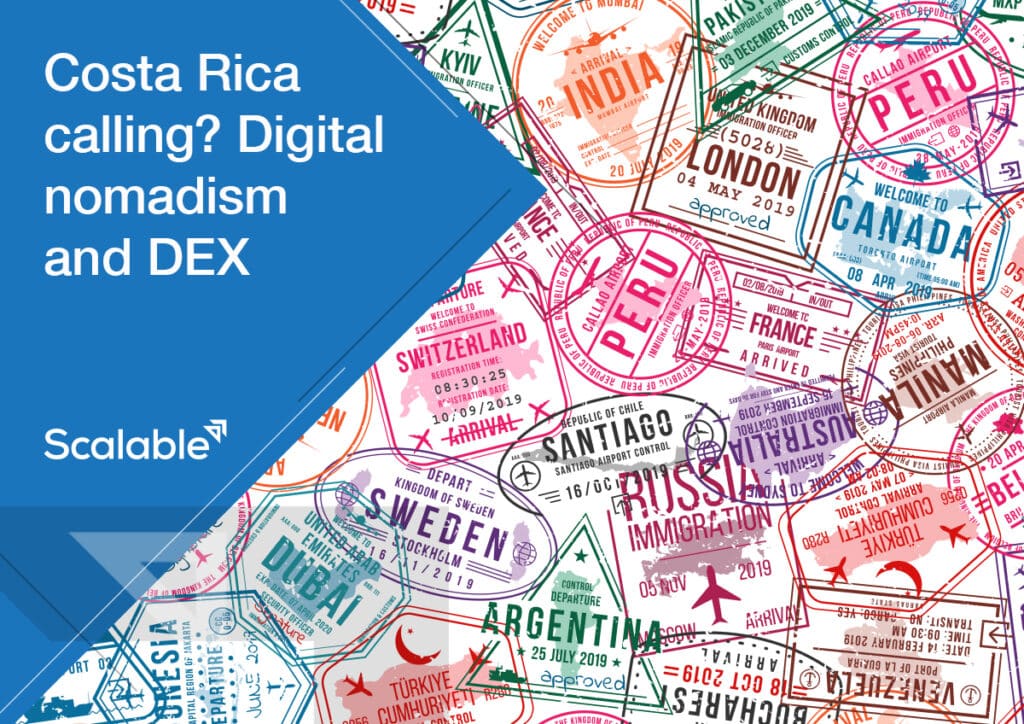Costa Rica calling? Digital nomadism and DEX
-
December 14, 2023
- Posted by: Sarah Morrison

In recent years, there has been an increased interest from businesses and workers alike in “digital nomadism” – where knowledge workers operate fully remotely from another country. The list of nations that have introduced “digital nomad visas”, which typically offer zero or reduced taxes to incentivize professionals to pack up and do their job remotely, is growing fast. In the UK, a recent study found that 70% of workers say they are planning to work abroad as digital nomads. And in the US, research found that 17.3 million American workers already consider themselves digital nomads.
The numbers sound significant, but what does the digital nomad trend really mean for HR and IT departments responsible for looking after the workforce?
Employee experience for web wanderers
Well, when all’s said and done, digital nomadism is essentially just supercharged remote working. All the same principles of hybrid and remote working should apply to digital nomadism, with measuring digital employee experience (DEX) the priority.
Just as with remote and hybrid workers, it’s far harder to “see” if the digital nomads in the workforce are happy and engaged. Equally, if non-office-based workers experience technical difficulties, they are unable to seek peer-to-peer help or speak to in-house IT as easily as when they were on-site. With the advent of hybrid and remote working, and now digital nomadism, it’s much more likely that employees will suffer in silence or search for workarounds that don’t actually solve the problem.
So, for businesses that decide to offer a digital nomad model, DEX observability is critical. If you fail to deliver a DEX that keeps workers productive and engaged wherever they are, it’s highly likely employees will down tools and find another organization that can offer a better experience. Organizations looking to embrace digital nomadism must look at the same four factors that should be prioritized in any hybrid working model:
Optimized DEX: This encompasses every element of employees’ digital experience across different devices regardless of location – including stability, responsiveness, and performance of endpoints and software.
Employee engagement: When an employee’s only point of contact with their organization is through their laptop screen, it’s crucial that they are kept engaged and satisfied. If there are pain points in their digital journeys, they’re likely to check out.
Trust and security: This means reducing security risks to protect organizations while their employees are on the move – which might include making sure the latest software versions are installed and improving patching compliance.
Process efficiency: Organizations need to identify and resolve inefficient workflows that are slowing workers down and impacting how productive they can be. For example, gathering data on user journeys and workflow to understand where non-intuitive processes or application switching is causing friction or delays.
Acumen, Scalable’s workplace analytics platform, delivers data that allows IT and HR leaders to assess these four factors in near-real time. This kind of sophisticated solution helps organizations achieve deep DEX observability. Arming IT and HR teams with actionable insights that enable them to create exceptional employee experiences, whether employees are complete digital nomads, hybrid workers, or fully office based.